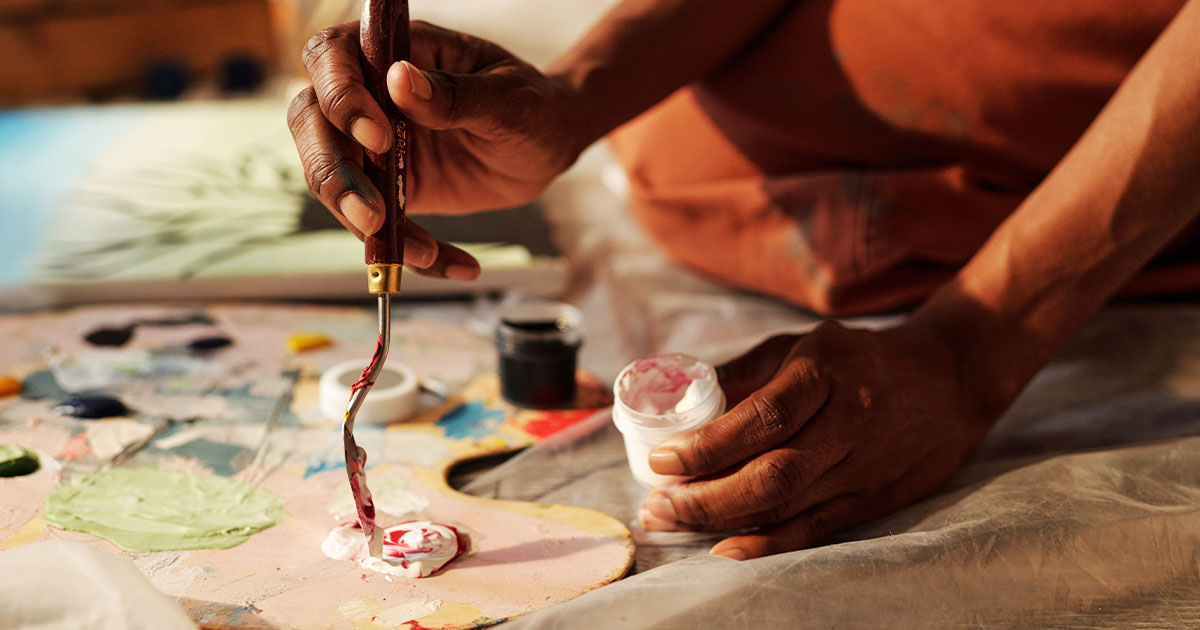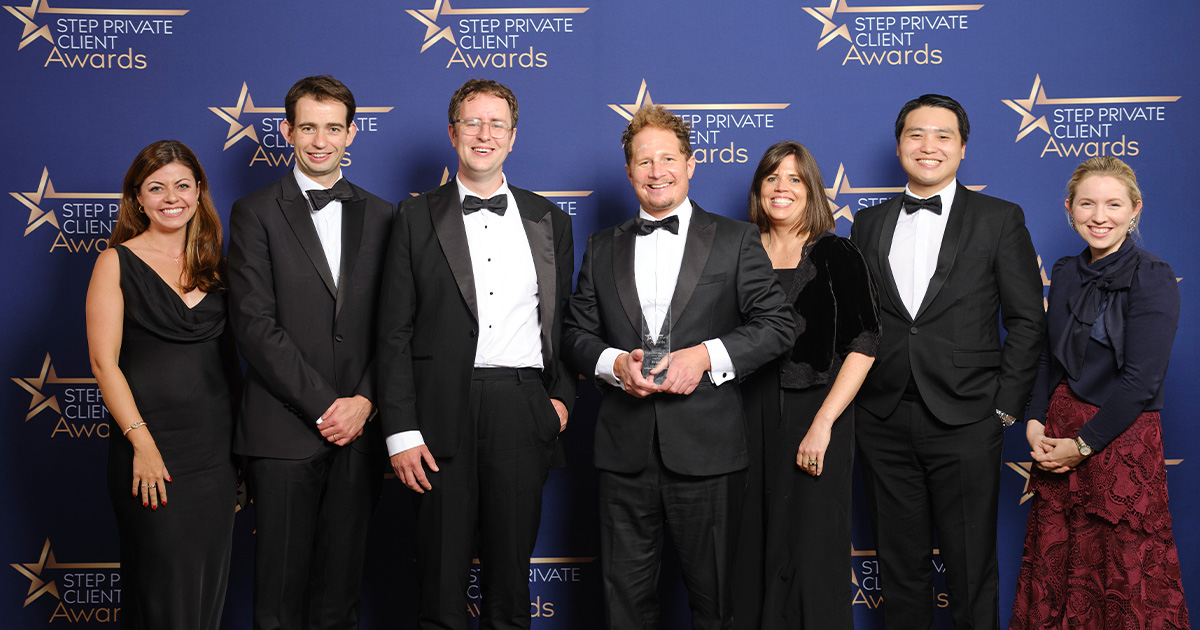Sotheby’s and Forsters – An Owner’s Guide to Art – Part 4

Buying and owning art can be one of life’s greatest joys. But while the drive to own art is often fuelled by an emotional connection with a piece or the prospect of holding a lucrative investment, it is important for buyers and owners of art to keep their wits about them, from both a legal and practical perspective.
Felix Hale (Sotheby’s Tax, Heritage and UK Museums Team) and Jo Thompson (Forsters LLP’s Art Group) aim to point those wanting to buy, sell, and hold works of art in the right direction. This five-part mini-series will cover the following key areas:
- Acquiring and selling art
- Transporting art
- Maintaining your collection
- Passing on your art collection to the next generation
- Art and philanthropy
This piece is aimed primarily at private individuals with a UK tax exposure.
Part 4 -Passing on your art to the next generation
It is important that art is not seen as a “static” asset, even if a work or collection is a long-term hold. You should ensure that you have discussions with your family about the future of your collection. It is important to know whether your family wishes to keep specific artworks or a collection within the family or not. If your intention is to pass artwork to the next generation, make sure you do so in the most tax efficient way possible. Alternatively, if future generations do not want to keep and maintain the artwork or collection, you might decide to sell all or part of it to raise funds for other purposes. Agreeing a strategy in respect of an artwork or collection can help to reduce the chances of a destructive post-death dispute arising.
No family situation or collection is ever quite the same, so it is certainly worth discussing your position with your advisors and putting appropriate long-term planning in place.
Gifts to the next generation
UK capital gains tax (CGT)
If you are a UK resident and do not claim or are not eligible for the remittance basis of taxation, there may be CGT to pay if your artwork has increased in value between the date on which you acquired the work and the date on which you give it away. Currently, CGT is charged at 10% at the basic rate and 20% at the higher rate.
Certain exemptions from CGT would be available on a gift to your children. For example, so-called ‘wasting assets’, which include clocks and watches, are exempt from CGT, as are any individual objects valued at £6,000 or less. In addition, each individual has an annual CGT-free allowance, which is currently £12,300 per year. This will be reduced to £6,000 for disposals made between 6 April 2023 and 5 April 2024 and to £3,000 for disposals made between 6 April 2024 and 5 April 2025.
Any capital gains tax charge arising on the gift would be a “dry” charge, as the transaction would not provide you with any funds from which to pay the tax due, so it is important that you reserve sufficient funds for the purpose of footing the capital gains charge that will be due and reportable in your self-assessment UK tax return in the tax year after you transferred the asset.
If you claim the remittance basis of taxation then it may be possible to gift free of tax if you make the gift outside the UK, if the intention is for the artwork to remain offshore. We recommend that if you claim the remittance basis of taxation and wish to transfer artwork, you should seek advice on the options available to you.
A UK resident with tax exposure in other jurisdictions should be mindful of CGT liabilities that may arise in these jurisdictions as a result of the gift and whether any tax treaties between the UK and the jurisdiction in question would protect against the risk of double taxation.
UK inheritance tax (IHT)
You will have an IHT exposure if you are UK domiciled (broadly, you intend to remain in the UK permanently) or “deemed domiciled” in the UK for tax purposes (because you have been UK tax resident for 15 of the last 20 UK tax years). If you are not UK domiciled or deemed domiciled, then you will only be exposed to IHT to the extent that you hold assets that are situated in the UK. For more detail on this, please see Part 1 of this series or contact Forsters for more tailored advice.
If you own an artwork or collection which has a significant IHT exposure, you may wish to contemplate making a lifetime gift of the work to the next generation to help mitigate the IHT exposure of your personal estate.
Outright gifts
Outright gifts to individuals do not attract IHT immediately. A gift of a piece of art to a child, for example, would be a “potentially exempt transfer”, meaning that the gift would be free of IHT, provided that the gift is absolute (in other words, you do not reserve a benefit in the artwork once the gift is made) and you survive seven years from the date on which the gift is made. If you died within this seven-year period, this would trigger a charge to inheritance tax at up to 40% of the value of the painting, subject to the availability of your inheritance tax-free allowance (“nil rate band”) of £325,000. If you survived beyond three years, the rate of IHT on the gift reduces, tapering to 0% if you survived the gift by the full seven years.
You can also make gifts of £3,000 in each tax year, which will be exempt from IHT, even if you die within seven years. You can carry forward one year’s exemption, so if you did not make any gifts last tax year, then in this one, you could give away £6,000 without any IHT consequences.
If you decide to make a gift, we recommend that the gift (including the date on which it is made) is formally recorded by deed. It avoids any argument about whether the recipient has taken physical ownership and the gift is therefore effective and it will be helpful for the executors of your estate to have this sort of documentation when it comes to administering your estate and working out the IHT due.
Gifts to trusts
A lifetime gift to a trust will, in many situations, attract an immediate charge of 20% to the extent that it exceeds the nil rate band. If you were to make a gift to a trust and then die within seven years, an IHT charge of an additional 20% could arise.
If you decide to make any lifetime gifts, you may wish to consider obtaining insurance to cover the risk of the potential IHT exposure while the seven-year clock is ticking. This might be particularly important when it comes to making outright gifts to individuals, who will be primarily liable for meeting the IHT charge.
Rental agreements
To ensure that the seven-year clock starts ticking for IHT purposes, it is essential that the gift is absolute. However (and as is often the case), you may wish to keep enjoying those works of art on the walls (or your collection of furniture, books, ceramics, or anything else!). If so, you can consider entering into a gift and leaseback arrangement whereby you would make a gift of artwork to the next generation and then lease the artwork back from the recipient of the gift at a commercial rate.
Rental arrangements can be an effective way of mitigating IHT and enabling you to continue to enjoy the item or work in question, but before one is entered into, it is important to consider the costs involved in valuing the objects and negotiating the rents. The rental arrangements also need to be in place consistently for seven years before the donor’s death and continue to reflect a market rent at any point in time during that period in order to eliminate completely any exposure to IHT. Clearly, then, the amount of rent that would need to be paid under a rental agreement should be compared against the IHT exposure.
Where artwork is held in trust and enjoyed by a beneficiary of the trust, then in certain circumstances, rental agreements can help to ensure that adverse tax implications do not arise as a result of the benefit conferred on the beneficiary. For further guidance on this, please get in touch with Forsters, who can liaise with Sotheby’s regarding valuations and negotiation of a rental figure (either on behalf of the owner or the borrower).
Artwork passing on death
Succession
The most effective way to ensure that your artwork ends up in the right place after your death is to put a will in place that governs the succession of your artwork (and, ideally, the rest of your personal estate).
Those with assets in different jurisdictions should ensure that any wills address the succession of those assets according to the relevant local laws. Forsters would be happy to advise on this.
Tax considerations
As mentioned above, if you are UK domiciled IHT will be charged on your worldwide assets at 40% on your death, subject to the availability of your inheritance tax free allowance of £325,000 and applicable exemptions, such as the spouse exemption. If you are not UK domiciled, but die owning assets in the UK, these assets will be subject to IHT in the same way.
Conditional Exemption
In order to mitigate your inheritance tax liability, you may wish to take advantage of a tax incentive that exists in the UK for owners of important works of art. It is designed to indefinitely defer tax arising on ‘pre-eminent’ works in return for allowing a degree of public access to them.
It is hard to overstate the importance of this scheme, which has been going strong since 1896 and is one of the main reasons why the UK has so many amazing objects and collections still in private hands but on public display. The scheme allows owners of ‘pre-eminent’ works of art and other objects (including land and buildings) to pass them down to the next generation and retain them in private ownership by conditionally exempting them from inheritance tax. In exchange, the owner agrees to grant public access to the object. Public access can be given to an object either by putting it on display in a house that is open to the public or placing it on loan at a UK museum. HMRC usually expect the object to be on public display for at least 28 days per year (25 days in Scotland) unless for example you are exempting archives or other manuscript material where public access can be given ‘by appointment’ only.
To qualify as ‘pre-eminent’ the object must be considered of either national, scientific, historic, or artistic importance. Works of art and other objects don’t necessarily have to be of high value to meet this threshold. Exemption can also be claimed on groups of items or sometimes an entire collection. In certain cases, it is possible to exempt a collection that might not necessarily meet the pre-eminence threshold on the basis of their association with a particular historic building.
If the owner no longer wants to put the object on public display or would like to sell the work, then the tax that would have been due becomes payable. If owners are contemplating selling an exempt object they should consider a ‘Private Treaty Sale’ to a qualifying UK museum as there can be significant tax advantages in doing so, as outlined in Part 5 (coming soon).
How we can help
For further guidance on your UK residence or domicile status, or on the tax implications of making a gift or leaving a legacy in your will to the next generation, please get in touch with Forsters.
Sotheby’s is delighted to discuss passing on your art collection to the next generation. Sotheby’s frequently assist owners with claims for Conditional Exemptions ranging from a single painting to large country house collections, advising on the likelihood of the work meeting the threshold required for exemption and providing supporting evidence for this. Forsters can advise on the associated tax reporting.
In the next and final part of the mini-series, we will be looking at philanthropic initiatives relating to art, as well as the tax benefits that incentivise owners to take advantage of these.
Felix Hale at Sotheby’s
Felix Hale is a Deputy Director in Sotheby’s Tax, Heritage & UK Museums department. He works with some of the most significant estates and collections in the UK, working with clients on valuations, sales, offers in lieu of tax, and claims for Conditional Exemption. He is a member of PAIAM (Professional Advisors to the International Art Market, Vice-Chair of the next generation board) and a member of STEP (Society of Trust and Estate Practitioners).
If you would like to contact Felix, you can email him on [email protected].
Jo Thompson from Forsters
Jo Thompson is an associate in Forsters’ Private Client team and part of Forsters’ Art and Cultural Property Group. She acts for UK and international clients, advising high net worth individuals, families, landed estates, family offices, trustees and beneficiaries on a range of estate, trust and tax planning matters. Her work includes succession planning for a number of living artists and advising on heritage property matters. She also acts for high net worth individuals and trustees holding significant art collections.






